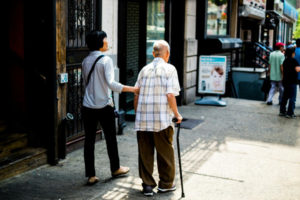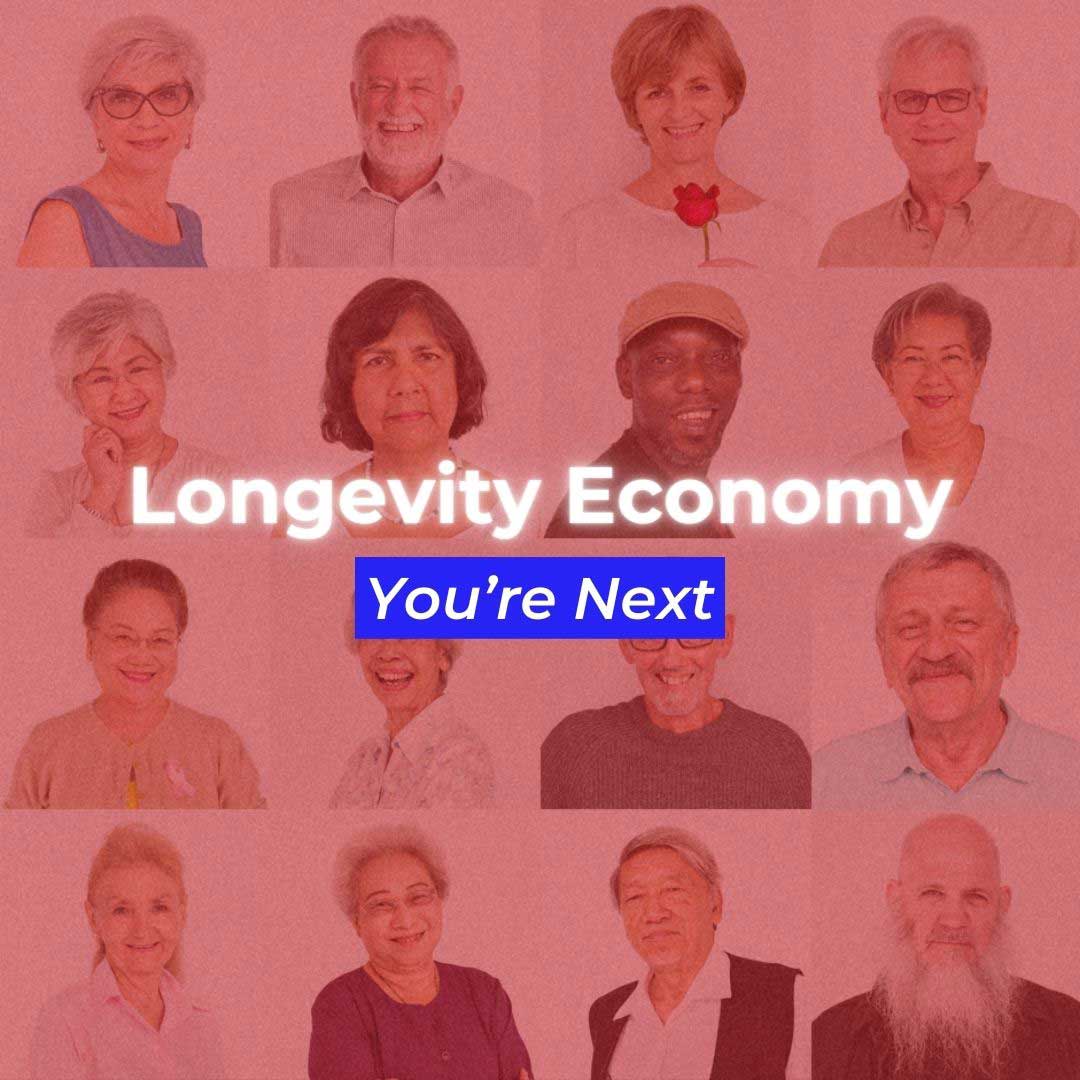CATEGORIES
#Inclusion and Impact #Well-Being #Work CultureOverview:
- The elderly population is higher than it has ever been before.
- By 2050, the global population will be majorly comprised of the elderly.
- The global infrastructure at present is not suitable for the aging population.
- There is an urgent need to restructure the present world to accommodate the needs of the elderly.
The longevity economy is rendered important due to several reasons. Workspaces have long since considered – and capitalized on – 20s and 30s as an average person’s prime productive years. This has a twin impact. On the one hand, teens are infantilized and underestimated of their ability and potential. On the other hand, people aged 40 and above are completely dismissed. This ageist discrimination severely impacts already marginalized communities including women in more ways than one.

When Does ‘Old Age’ Begin?
While the general consensus is around age sixty, some speculate that it might be around age forty. Further, socio-cultural distinctions between young-old and old-old have been identified and acknowledged. Even so, this “starting point” has been observed to cyclically change based on internal and external factors. Presently, the commencement of old age is viewed from an economic lens and is based on chronological age.
A Context to the Longevity Economy
The Longevity Economy is where the elderly (generally 50 and above) are the primary market contributors. In such a market, the length of one’s life is a key factor. It includes the consumption goods and services purchased as target audiences or majority purchasers. Such spending triggers various sets of further economic activities. Today, two factors are observed to significantly impact society and the economy – an aging society, and longevity. Even so, global politics have yet to give due regard to this pressing issue.
Why is the Economics of Longevity Important
Today, the universal life expectancy is around 71 years. This is significantly high when juxtaposed with the 30 years that it was in 1870. This increase in longevity has various effects. Firstly, it increases urgency in understanding how we age and how that impacts our economic decision-making. Secondly, a longer lifetime requires us to realize how to optimize and adapt our life cycle behaviors, policies, and institutions. Accordingly, understanding what lengthier living entails, and identifying the channels to ensure welfare enhancing measures are implemented effectively become necessary.

The Overlooked Side of Being a Boomer
The now-familiar term ‘boomer’ refers, generally, to those who were born during the ‘baby boom’ era post World War II. But people still seem to be lagging a little in terms of comprehending what being a boomer now entails. The drastic uptick in the global population within a span of a couple decades has severally impacted the world. What people fail to consider is that the infamous ‘boomers’ are currently transitioning into the ‘elderly’ age range. In 2018, those aged 65 or older outnumbered children younger than five – for the first time in global history. Further, it is anticipated that the number of people aged 80 years or older will triple to 426 million in 2050.
The Danger of Unplanned Longevity
Growing old is, generally, a non-issue. In fact, across cultures, people often pray for their loved ones to live long lives. Today, however, it can only be good to be old if you can afford it. Despite several factors being at play, for simplicity’s sake, this can be chalked up to two interconnected universal social phenomena. First, the shift of family structures from joint families to nuclear ones, and second, the rise of individualism. Both these factors ultimately result in loss of community support in one’s old age. Lest one saves for retirement from a lifetime of work, it is unlikely that their old age would be peaceful.
Ageism is an Impediment in Quality Living
In Joseph Coughlin’s words, it’s “a third of our adult life where there are no stories, tools, rewards or expectations.” There is little to nothing that the society allows the elderly to do. Moreso when the world turns a blind eye to their needs and wants across industries. After a certain age, it is assumed (sometimes patronizingly) that they are physically unfit to work as they used to. Apart from employment, even seemingly inconsequential industries such as the fashion industry, do not take into consideration the elderly population. Travel and educational opportunities are also vastly constrained. Access to medical care is also limited, especially since not much importance is placed on healthy aging.
The Elderly Population is a Marginalized Group
As the name suggests, to be marginalized means to be pushed to the sidelines. It is the idea that any identity that is not socio-culturally predominant and loathed centrally is marginalized. When speaking of marginalized communities, people tend to picture the archetypes. This may include women, the LGBTQ+ community, people with disabilities, people of color, and indigenous peoples. It may also include people of a lower socio-economic status in general. However, as evidenced by the discussion above, the elderly population is, by definition, a marginalized section of the population. Even people who, throughout their lifetime, were not necessarily part of the marginalized communities can become marginalized in old age. This can happen when the elderly lose support by or by way of their family – left to fend for themselves.

Suggested Measures to Deal With the Aging Population
A recent World Economic Forum report addresses the imminent problem of the longevity economy. It proposed a set of measures by way of ‘principles’, summarized as follows.
Public-Private Partnerships to Support Financing
A major hurdle that beseeches attention is equitable access to resources, insurance, savings programs, and support during financial distress. Older age will only amplify financial struggles if they already belong to marginalized communities, or have no other family living. An efficient solution lies in facilitating public-private partnerships to establish such vehicles in this regard.
Universal Access to Financial Education
Education was not as comprehensive as it is today, nor was it considered an absolute necessity. A significant number of old-aged individuals today do not go to college for higher education. Of them, in some countries, several did not study beyond middle school. This sort of limited education was commonly observed in women and people of lower socioeconomic backgrounds. Therefore, it is not surprising that a large portion of the elderly today may not have had access to financial education. The WEF suggests that infrastructure be developed to educate and help the elderly to make informed decisions autonomously.
Prioritize Healthy Aging
Old age is often correlated with sickness and aches. Developing infrastructure to encourage healthy aging for youth and also people who are already well along the aging process. It is proposed that it may help in reducing the costs of medical care later on. However, this also means that the standard of living in general must be improved overall.
Evolve Jobs for a Multi-generational Workforce
“Retirement age” makes it so that every person is faced with an ultimatum, whether they like it or not. As a result, they may be displaced from a longstanding routine, leaving them lost and sometimes even depressed. Ageism in employment is extremely prevalent; steps must be taken to correct this practice at the earliest.
Inclusive Design to Facilitate Social Connection
People tend to overlook the fact that the elderly are often very lonely. They’re made to retire from jobs they probably went to for decades. Their children (if any) may have their own lives and families. Their partners or other loved ones may not be alive anymore. Nearly every other day is spent going to the funerals of their own peers and close friends. Depression among the elderly is not given as much importance as it should. The WEF recommends that this loneliness be combatted through employment, infrastructure, and through multigenerational living. This can be done also by educating the elderly about accessing and using the internet and social media.

Acknowledge Intersectional Inequities in Longevity
Importance is also placed on developing these measures and strategies as equitably as possible since everyone’s lived experiences are different. Accordingly, their needs as an elderly individuals may be different. An elderly woman from the global south would have different needs, so would the employment need for burnt survivors as compared to that of an elderly white man.
Conclusion:
Most people live till they grow old, and it is high time that societies restructure themselves to accommodate their needs. After all, none of us are going to remain young forever. This is a call for action – if not for the elderly of today, then at least for the elderly us.
FAQs:
What is the longevity economy?
It is an umbrella term in economics used to describe the market that targets aging. It aims to promote healthy aging and improve quality of life.
Why has life expectancy or longevity increased?
There are several factors that have contributed to the increased life expectancy of the human species as a whole. This includes major advancements in health care, nutrition, and education, along with factors such as strengthened human immunity.
What do old people do?
Google says old people mostly engage in recreational activities like playing board or card games, gardening, or knitting. But it is not far-fetched to say that the elderly would like to do more things than their bodies permit. The society actively prevents the elderly from engaging in activities that are generally not associated with old age. This may include sitting through a 9-to-5 job, or carpentry.


